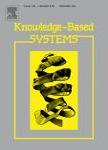版权所有:内蒙古大学图书馆 技术提供:维普资讯• 智图
内蒙古自治区呼和浩特市赛罕区大学西街235号 邮编: 010021

作者机构:Ningbo Univ Sch Informat Sci & Engn Ningbo 315211 Peoples R China Key Lab Mobile Network Applicat Technol Zhejiang P Ningbo 315211 Peoples R China
出 版 物:《KNOWLEDGE-BASED SYSTEMS》 (Knowl Based Syst)
年 卷 期:2025年第311卷
核心收录:
学科分类:08[工学] 0812[工学-计算机科学与技术(可授工学、理学学位)]
基 金:National Natural Science Foundation of China, NSFC, (61906101) Natural Science Foundation of Ningbo Municipality, (2023J115)
主 题:Unsupervised multi-view feature selection Graph-Regularized Consensus Learning Independent diversity Subspace learning Clustering structure
摘 要:In the existing data dimensionality reduction methods, unsupervised multi-view feature selection has been widely adopted for its effectiveness. However, most of the current methods lack sufficient integration of consensus and complementarity principles. On the one hand, some methods focus solely on the consensus representation of multiple views and neglect the inter-view complementarity and the uniqueness of each view. On the other hand, some methods obtain intrinsic representation matrices for each view and combine them crudely to form the final result, which fails to exploit complementary information among views. Inspired by these two aspects, this paper proposes the Graph-Regularized Consensus Learning and Diversity Representation (GCDUFS) for unsupervised multi-view feature selection. The algorithm leverages graph regularization to constrain the consensus matrix, better capturing common manifold information. It also utilizes kernel functions to measure the dependency of the data in the Hilbert space, effectively capturing the diverse information across all views. Additionally, symmetric non-negative matrix factorization (SNMF) is employed for clustering analysis. The above-mentioned methods are smoothly integrated into a unified model framework, and the GCDUFS algorithm is optimized using the alternating direction method of multipliers (ADMM) minimization strategy. Through the analysis of nine multi-view datasets, we conducted comprehensive clustering experiments and verified that our proposed method outperforms several state-of-the-art competitors in terms of performance.